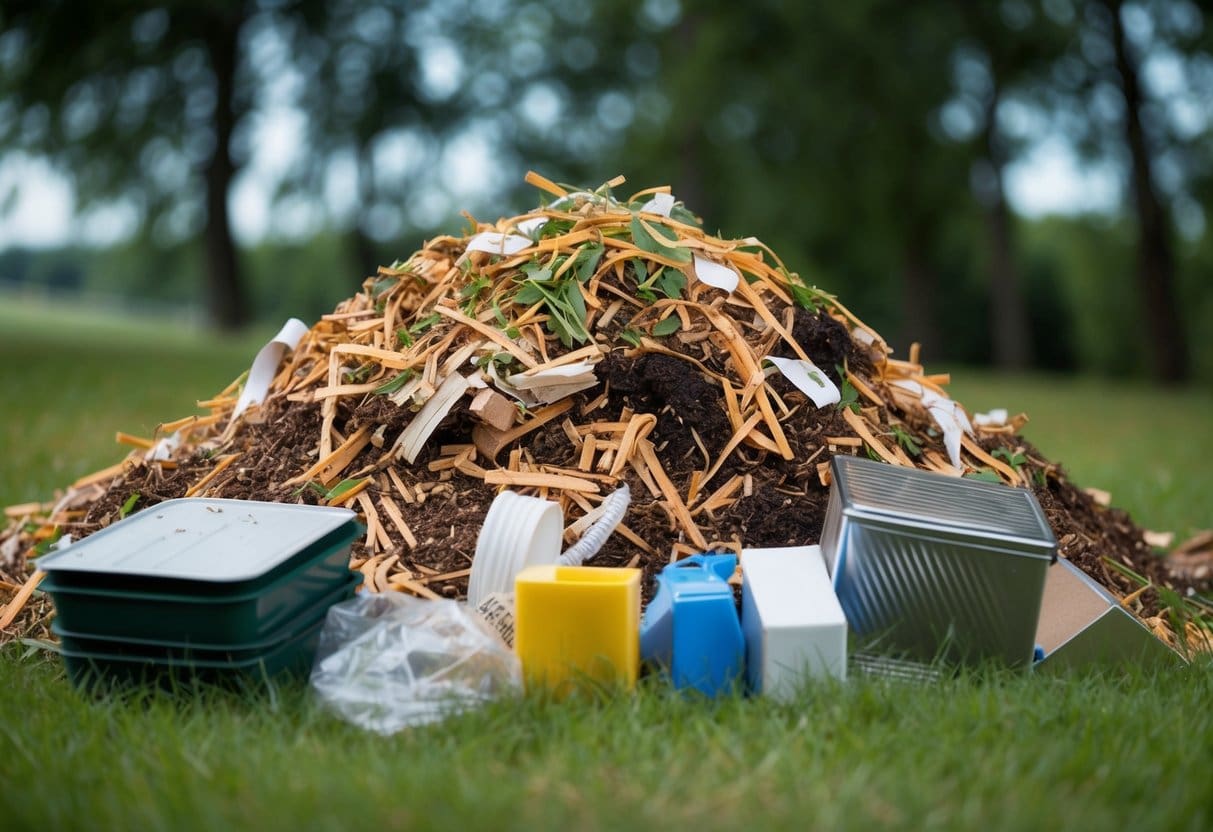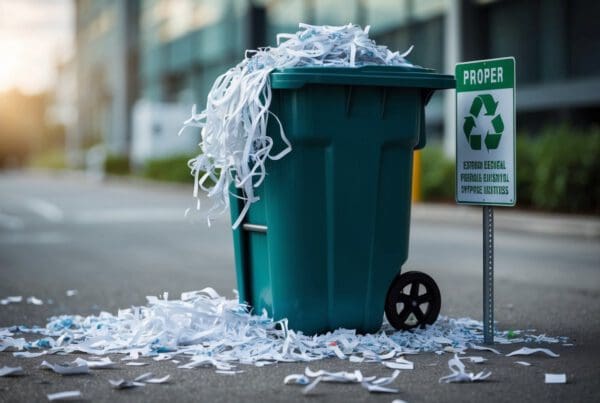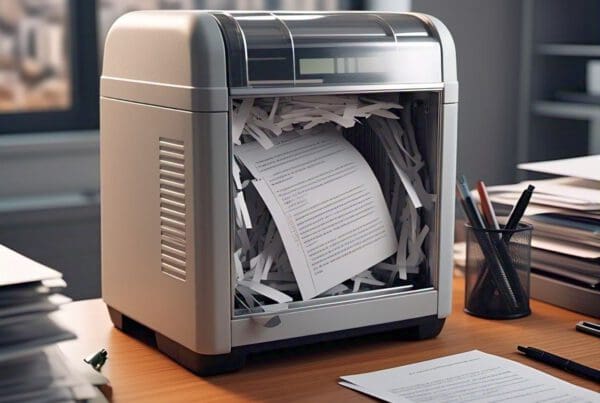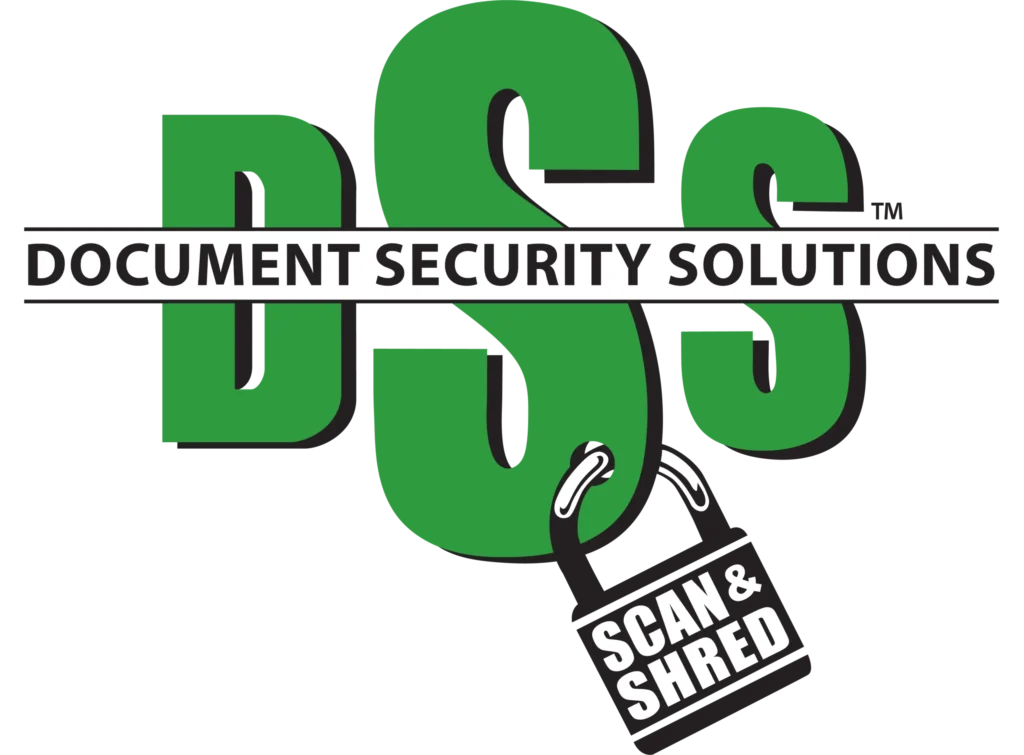Understanding Shredded Paper Disposal

It’s important for us to dispose of shredded paper correctly to protect sensitive information and minimize paper waste. Let’s focus on the importance of disposal and the challenges involved with different types of shredded paper.
The Importance of Proper Disposal
Shredded paper disposal is crucial because it often contains sensitive or confidential information. If not disposed of properly, this information can fall into the wrong hands. Our goal is to protect privacy and ensure data security.
Additionally, proper disposal helps in waste management. When we dispose of shredded paper the right way, we contribute to recycling efforts and reduce landfill waste. Recycling shredded paper can provide raw materials for new paper products, helping the environment.
We must also consider contamination. Paper mixed with non-recyclable materials can spoil entire batches of recycled paper. So, it’s vital to keep shredded paper clean and sorted to enhance recycling efficiency and maintain high-quality recycled paper.
Types of Shredded Paper and Disposal Challenges
Different types of shredded paper can create various challenges in disposal. Office document shredders can vary the size and style of the shred, affecting how we recycle it. Some shredders create tiny bits that can escape recycling screens, making them hard to process.
We must recognize that mixing shredded paper with other recyclables might lead to contamination. This happens when shredded pieces intertwine with materials like plastic or metal, disrupting the recycling process.
Shredded paper can also be used for composting. It breaks down well when mixed with other compost materials. However, this only applies if the paper is free from harmful inks or chemicals. Each disposal method requires attention to detail to avoid complications and ensure proper recycling or composting.
Recycling Shredded Paper

When recycling shredded paper, it is crucial to understand the best practices and the specific requirements of different recycling systems. The process can vary depending on your location and the available recycling facilities. Let’s focus on making sure our efforts lead to effective recycling.
Recycling Center Protocols
Local recycling centers may have specific guidelines for handling shredded paper. Some centers accept it without any issues, while others might not. We need to check if the local recycling center prefers shredded paper to be placed in paper bags or cardboard boxes.
Using clear bags can often lead to rejection, as they may cause contamination. It’s essential to contact the center directly or visit their website for precise instructions. Proper preparation will increase the chances of our shredded paper being recycled successfully.
Curbside Recycling Tips
Curbside recycling programs often differ in their acceptance of shredded paper. Many programs do not take shredded paper because it can slip through sorting machines, causing problems. If our curbside program accepts shredded paper, we should place it in paper bags and label it clearly.
Avoid using plastic bags since they are not typically recyclable through curbside programs. By following these steps, we ensure our efforts align with local recycling options, maximizing the likelihood of proper paper recycling.
Avoiding Contamination in Recycling
Contamination can occur if shredded paper is mixed with other recyclables improperly. We must separate shredded paper from other materials like glass or plastic. Keeping it clean and dry ensures it does not spoil the recycling process.
It helps to shred only the necessary documents, minimizing the amount of shredded paper being introduced into the recycling stream. Ensuring that staples, clips, and other non-paper elements are removed also contributes to a successful recycling operation. Through careful sorting, we can help maintain the integrity of recycling facilities.
Composting with Shredded Paper

Shredded paper can be a valuable addition to our compost pile when used correctly. It acts as a carbon-rich material and helps balance the compost ecosystem. Proper knowledge and actions are essential for efficient composting with shredded paper.
Composting Guidelines
When adding shredded paper to compost, we should ensure the paper is free from glossy or colored inks, as these can introduce unwanted chemicals. It’s important to mix shredded paper with other compost materials to promote decomposition. We should aim to layer it with food scraps, grass clippings, and garden waste.
Breaking down shredded paper into small pieces can speed up the composting process. Tearing into inch-sized bits allows for better mixing and decomposition. Mixing shredded paper with slightly moist materials helps maintain the right moisture level.
Maintaining the Carbon-to-Nitrogen Ratio
A proper carbon-to-nitrogen ratio is essential for successful composting. Shredded paper provides carbon, and should be balanced with nitrogen-rich materials like food scraps and fresh grass. A suggested ratio is about 25-30 parts carbon to 1 part nitrogen.
Monitoring the feel and appearance of our compost can guide us. If it’s too dry or not breaking down, we may need more nitrogen materials. If it smells or is too wet, adding more shredded paper or other carbon materials can help balance the compost.
Alternative Uses for Shredded Paper
Shredded paper has many uses outside the recycling bin. It can be great for packing material, animal bedding, and other creative projects around the home. These options not only help reduce waste but also provide eco-friendly alternatives to conventional products.
Reuse as Packing Material
We can reuse shredded paper as an effective packing material. It’s a cost-effective and sustainable way to protect fragile items during shipping or moving. Shredded paper cushions items by filling empty spaces in boxes, preventing them from shifting.
For best results, combine it with bubble wrap or packing peanuts for added protection. Shredded paper is especially good for protecting corners and forming a layer at the box’s base. This can save us money and reduce waste by not buying new packing materials.
If you’re shipping items, remember to tightly pack shredded paper into all void spaces. This ensures maximum protection and prevents items from jostling around. Using shredded paper for packing is an easy switch from traditional materials, benefiting both us and the environment.
Shredded Paper in Animal Bedding
Shredded paper makes an excellent choice for animal bedding. It’s comfortable and helps keep small pets like hamsters, guinea pigs, or rabbits clean and cozy. This type of bedding is easy to change and helps absorb moisture.
It’s crucial to avoid paper with harmful inks, like those in some junk mail, which could be toxic to animals. We should opt for plain paper that has been shredded.
Shredded paper in bedding is not only affordable but also contributes to waste reduction. Compost it after use, as it breaks down naturally, providing an eco-friendly option for pet care.
Creative and Practical Reuse Ideas
There are many creative ways we can repurpose shredded paper. It can be used in crafts, gardening, and even cleaning. Use it to make papier-mâché projects or create homemade art pieces. For gardening, it can be mixed into compost or used as mulch.
We might also use shredded paper to help clean up messes as it absorbs liquid well. This is particularly useful with spills or in muddy areas during winter. Additionally, shredded paper can fill drafty gaps in older homes, helping to keep us warm.
By finding new uses for shredded paper, we reduce waste and find creative solutions that benefit us and the planet. Let’s consider these ideas the next time we wonder how to dispose of shredded paper.
Staying Informed and Compliant
Disposing of shredded paper requires us to be aware of various regulations and policies. It’s important to adapt to any changes and support local initiatives for effective disposal.
Following Local Regulations
We need to understand local guidelines for disposing of shredded paper properly. Many areas have specific recycling guidelines, and it’s crucial for us to follow them. This often means using separate bags for shredded paper or taking it directly to designated drop-off points.
Our local recycling center can provide details on accepted items and any restrictions. We should regularly check their websites or contact them directly to stay informed. By following these guidelines, we help maintain an efficient recycling process and avoid contaminating other recyclables.
Staying Updated with Changes in Policies
Recycling policies can change, so we must keep ourselves updated. Local governments may introduce new rules regarding paper disposal due to developments in recycling technology or to improve environmental impact.
Subscribing to newsletters from our local recycling center or municipality can alert us to policy changes. Local news outlets or community meetings may also share updates. Being proactive helps ensure we meet current guidelines and adjust our actions to support sustainability effectively.
Engaging with Local Recycling Initiatives
Getting involved in local recycling initiatives benefits both us and the environment. Recycling centers often host events or campaigns that aim to raise awareness about proper disposal methods. Joining these initiatives can provide us valuable insights into efficient recycling practices.
Some programs promote using shredded paper creatively, like in composting or as animal bedding. Animal shelters might appreciate donations of shredded paper for bedding, as it provides comfort for animals. By engaging with local initiatives, we contribute to a community-focused effort, which can make a big difference in waste management and resource sustainability.





